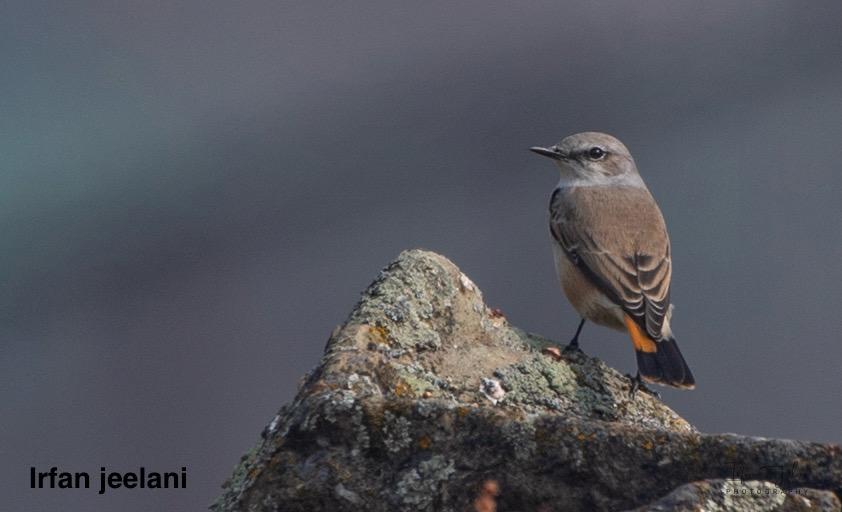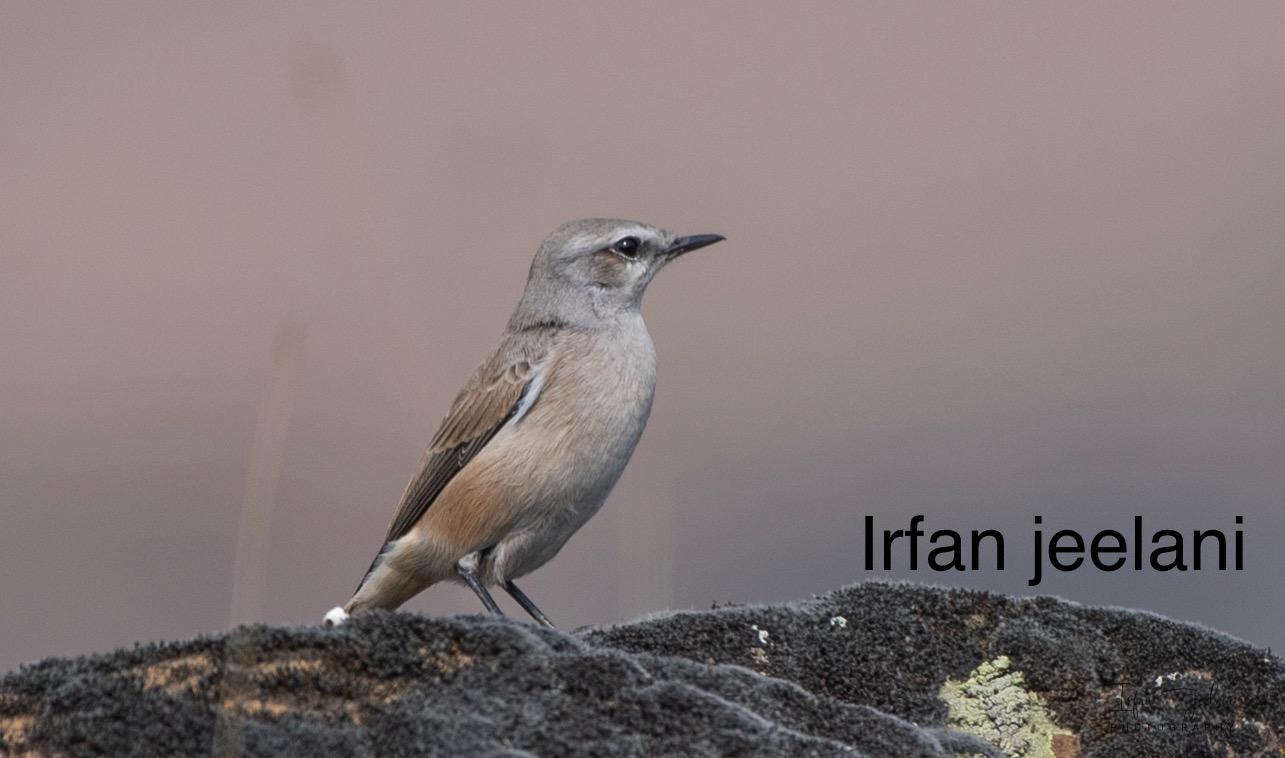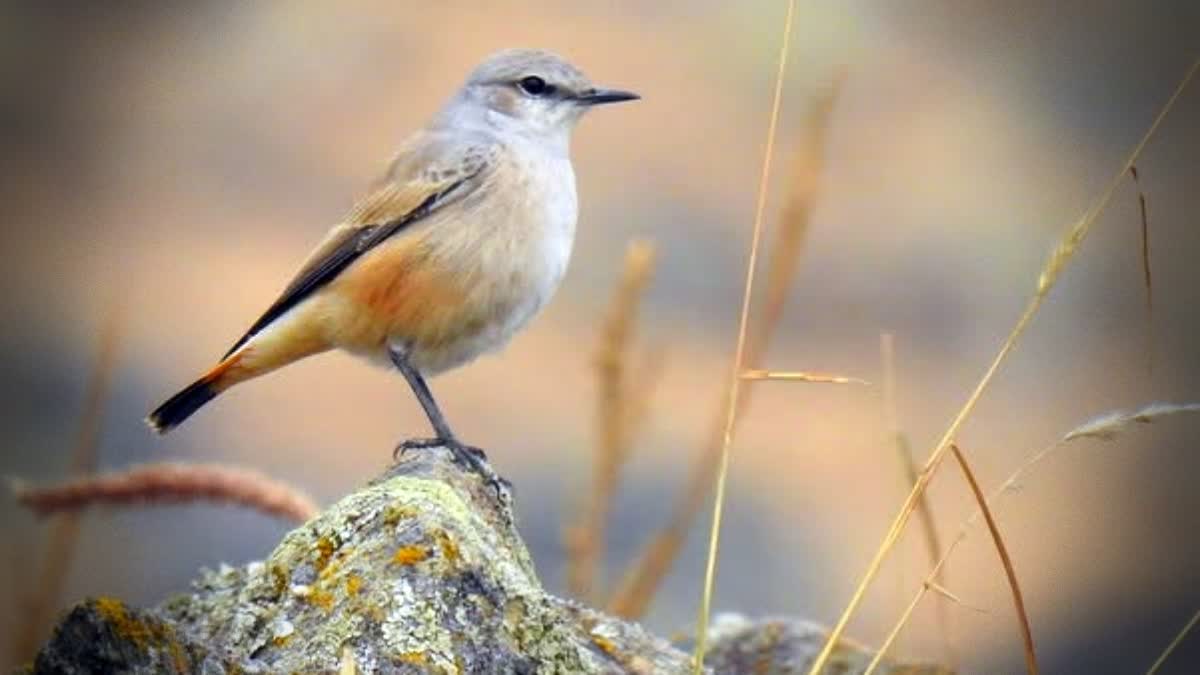Srinagar: The red-tailed wheatear, also known as the rusty-tailed wheatear, Persian wheatear, or Afghan wheatear (Oenanthe chrysopygia), has been photographed for the first time by birdwatchers in Kashmir. Three enthusiastic birdwatchers from the “Birds of Kashmir” club— Irfan Jeelani, Ansar Ahmad, and Sheikh Riyaz—made the sighting.
The trio documented the red-tailed wheatear in the scenic Zabarwan mountains in Srinagar. “We sighted the bird in the Zabarwan hills on December 22,” Jeelani told ETV Bharat. “It took us time to verify the bird’s identification. Once experts confirmed it, we announced that the red-tailed wheatear had been sighted in Kashmir.”

Seasoned birdwatcher Jeelani, who has recorded several rare birds, emphasized the importance of the sighting. “A specimen of this bird from Kashmir is housed in the American Museum of Natural History, however, it was reportedly from the 1886 and 1891 period. There was no photographic proof that the bird had been seen in the area. Our sighting marks the first time the bird has been photographed in Kashmir,” he said.
He also expressed optimism about the resurgence of avian diversity in Kashmir. “Several birds are returning to Kashmir after years. Recently, we sighted the Black-necked Grebe, Falcated Duck, and Collared Pratincole in Hokersar Wetland Reserve in Srinagar. I am hopeful that we’ll record more such remarkable sightings in the future."
Red-tailed wheatear is a small passerine bird, native to mountainous regions of southwest and central Asia, has a breeding range stretching from north-eastern Turkey, Armenia, and Azerbaijan eastward through Iran, Afghanistan, southern Tajikistan, and western Pakistan. During winter, it migrates south to warmer climates, including the Arabian Peninsula, Eritrea, southern Iraq and Iran, Pakistan, and north-western India.

The bird is modestly sized, measuring about 14.5 cm in length, with a wingspan of 26–27 cm and a weight of 20–27 grams. Its plumage is mostly grey-brown above and pale greyish-white below, with subtle features such as a faint pale stripe above the eye, a rufous hue on its ear coverts, and silvery-white underwing coverts. The bird’s most distinctive feature is its reddish rump and the bases of its outer tail feathers, contrasting with its black tail, which forms a T-shaped pattern. Male red-tailed wheatears have black markings between the eye and bill, distinguishing them slightly from females.
Red-tailed wheatears breed in high-altitude mountainous terrain, typically at elevations of 1,200 to 4,000 meters. They prefer barren, rocky landscapes with sparse vegetation for nesting. During winter, they descend to lower altitudes, often inhabiting rocky hills, steppe regions, scrubland, and semi-deserts.
Primarily insectivorous, the bird forages on bare ground, feeding on ants, beetles, and caterpillars. It is known for its unique hunting behaviour, which includes digging for beetle larvae with its bill and launching sudden attacks from exposed perches like rocks. Breeding occurs between late March and June, during which the birds raise two broods. The female lays four to six pale bluish-white eggs in a cup-shaped nest made of grass and plant material, tucked into crevices or holes in rocks and walls.
Read more:



